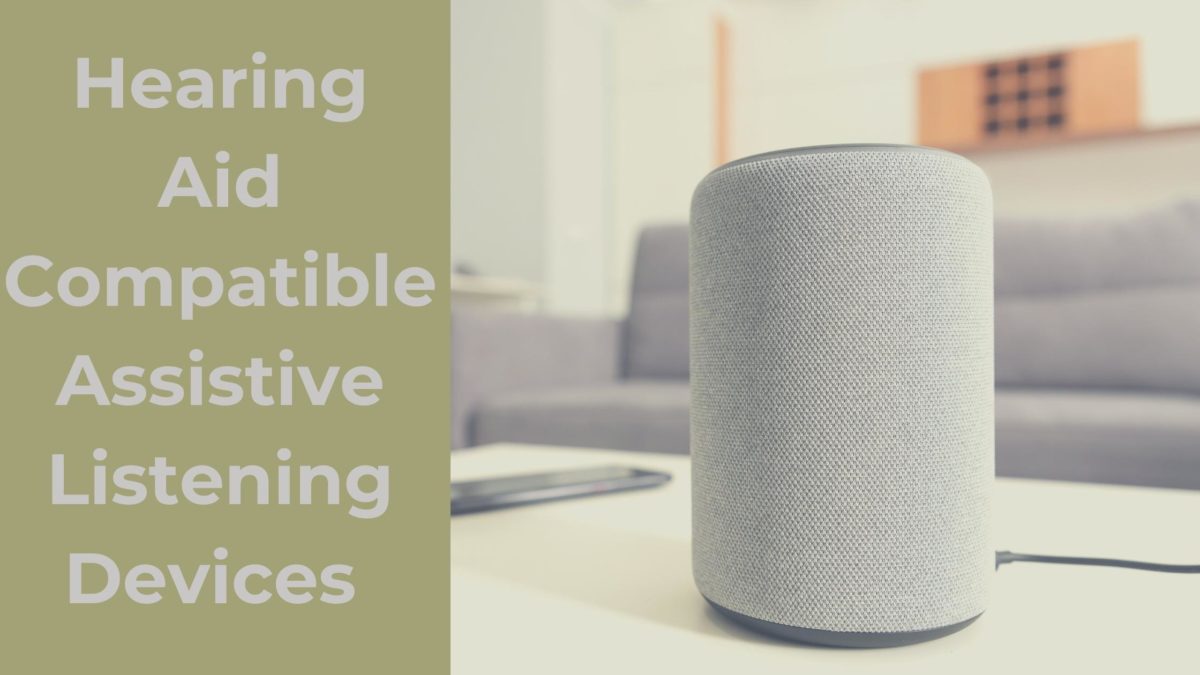
Hearing Aid Compatible Assistive Listening Devices
If you have hearing loss, there’s a good chance you’re using hearing aids to get through your days. Hearing aids are potent tools for receiving, amplifying, and processing sound. Hearing aids, like other electronic equipment, have benefited from technological breakthroughs and are now more innovative than ever. But there are other technologies that, when used in conjunction with a hearing aid, can improve the listening experience even further. That’s where Assistive listening devices come in.
What exactly are Assistive Listening Devices (ALDs)?
Assistive Listening Devices help you hear sounds more clearly by amplifying the sounds you want to hear and suppressing background noise to make the desired sound even clearer.
ALDs are not hearing aids and can be used independently. They’re already used in a variety of settings, including jobs, education, and entertainment. These devices can also help you in your daily life, particularly if you suffer from hearing loss. When combined with a standard hearing aid, this technology can significantly improve your listening experience.
A variety of ALDs can be used in conjunction with hearing aids to improve sound quality and hearing capacity. Here’s a quick rundown of hearing aids compatible assistive listening devices to help you better understand your options.
Hearing Loops
Hearing loops, also known as audio induction loops, are meant to improve the sound in public spaces. This type of sound system can be found in banks, airports, conference rooms, stadiums, and classrooms, among other places.
Hearing loops are placed around a space, creating a magnetic field or current that hearing aids can link to through a small telecoil incorporated in the device. This enables the hearing aids to directly detect audio signals in the environment and adjust to the wearer’s particular hearing preferences. Hearing loops help people to hear the sound more clearly in noisy and difficult-to-navigate environments. They are a very convenient and accessible choice. When in a hearing loop-equipped space, the wearer only needs to activate the telecoil functionality on their hearing aid device.
Bluetooth
Many current hearing aids are Bluetooth-enabled, allowing you to use some of your everyday electronics to help you hear better. You can, for example, pair your hearing aids with a Bluetooth-enabled TV or computer and watch your favorite shows with the audio streaming directly to your ears.
Connecting your smartphone to your hearing aids works similarly, allowing you to converse on the phone, listen to music, and even hear navigation directions delivered directly to your ears. This technology allows you to use your hearing aids like wireless headphones, allowing you to hear even in noisy environments.
Amplified telephones
Landline phones can be tough to use for hearing aid users because they frequently cause feedback or an echo. These concerns are addressed by amplified phones, which are mainly built for those with hearing problems. They boost the level of the phone’s noises and make it simple to alter the level. Amplified phones also lessen feedback disturbances and make high-pitched sounds easier to hear.
Telecoil-specific amplified phones, which work similarly to hearing loops, are also available. The telecoil option on the hearing aid device takes the sound from the phone when it is turned on. This is an excellent technique to cut through background noise and focus on the person on the other end of the line.
FM Systems
FM systems are not a new hearing aid innovation, but they can be effective, especially in noisy environments. The FM system works by sending amplified sounds to hearing aids via radio waves. The speaker’s microphone receives sound waves, which are then taken up by the hearing aid wearer’s receiver. This receiver can be built into hearing aids or purchased separately (headphones or neck loop). FM systems allow sound to be absorbed by both ears’ hearing aids while simultaneously blocking out background noise. If you’ve ever worn a headset during a guided tour, you’re probably familiar with and have utilized this technology.
Personal amplifiers
Personal amplifiers are another assistive listening device that isn’t as necessary with advanced hearing aids. Personal amplifiers are microphone-equipped handheld devices that amplify sound that has been absorbed by a receiver (likely built into hearing aids or neck loop). This sort of ALD is better suited to smaller groups and one-on-one chats.
If you’re looking for more help connecting your hearing aids to ALDs, we at Absolute Audio would love to help! Contact us today to set up an appointment.
